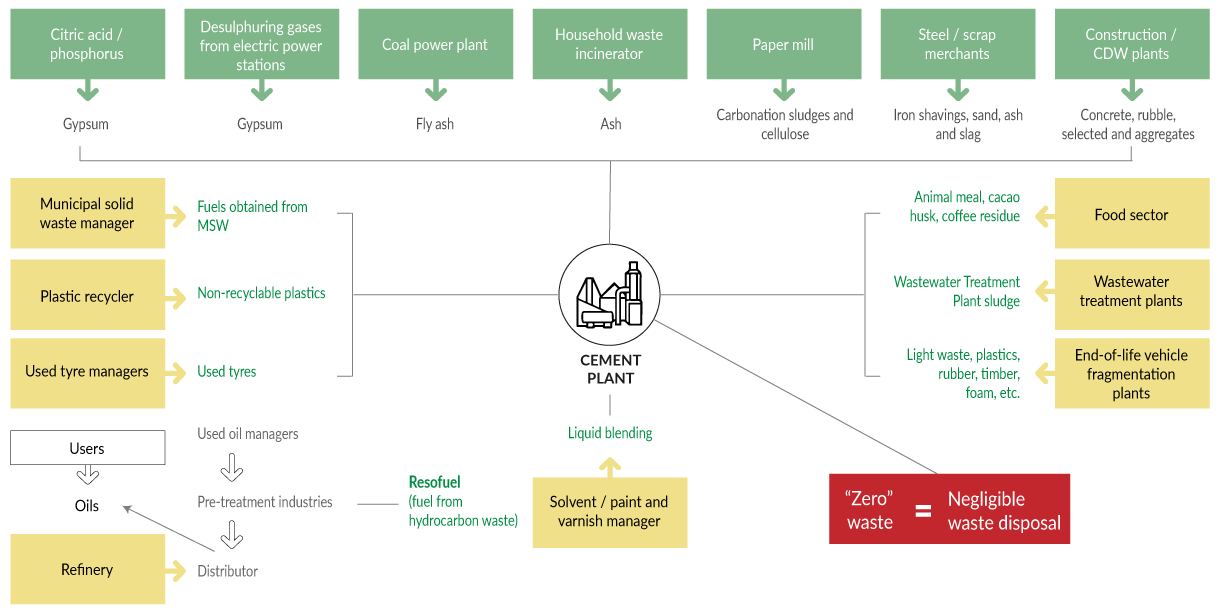CIRCULAR ECONOMY
Coming up with solutions and new sustainable products for the construction industry by turning waste into new materials
The cement industry within the framework of the circular economy

How does the cement industry fit into the circular economy?
1. Increasing the efficiency of the resources by recycling
For decades, the cement sector has been one of the great recyclers of the economy where the volume of waste coming from other industrial activities used in the manufacture of its products is concerned. Examples of this practice include fly ash, slag, construction and demolition waste, sludge from paper or sugar manufacturing processes, etc.
2. Developing comprehensive solutions for waste reutilisation: responsible use of the resources
The cement industry acts responsibly, invariably seeking different ways to mitigate the environmental impact of its operations. To reduce this impact we turn waste into alternative and more environmentally-friendly fuels for our manufacturing plants, complying with the current environmental legislation, and with all the safety guarantees.
What does co-processing mean?
It is the use of waste either as raw materials or an energy source, or both, instead of using natural mineral resources (recycled material) and fossil fuels (energy valorisation), when that waste would otherwise have to be disposed of at a disposal site.
Co-processing offers a safe and sound solution for society, the environment and the cement industry, replacing non-renewable resources with waste that is subjected to strict control measures.
Waste as raw materials
Waste as fuels

Advantages of using waste at cement plants
Health and Safety Guarantees
The recovered waste is subjected to all the health and safety analyses required, in the same way as this is done with traditional fossil fuels, natural raw materials and other components. These tests are conducted with suitable procedures that include personnel prevention and protection equipment and specific storage facilities that are safer for each material.
Scientific evidence is overwhelming and shows, without any doubt, that the use of fuels prepared from waste does not increase emissions from the plants, and neither does it cause any further risks to personal health and safety, while at the same time guaranteeing the same quality for the product.
